Termite Inspections Melbourne from Exopest Control
What are Termites? Termites are social insects and live in colonies. Some termites live in mounds above ground (e.g. Magnetic termites), some live in nests up telephone poles (e.g. Nasutitermes species), some in the base of trees and stumps ( e.g. Coptotermes species), and some even live in the very timber walls of the home. Call us to find out more on 1800 686 299.
How to Inspect for Termites
Termite Behaviour in Melbourne Termites can nest in the trunk of a tree just above soil level or sometimes higher up in the fork of a branch where moisture has entered the tree causing decay. Termites can tunnel 50 to 80m from their nest to a feed site, for example from a tree 3 house blocks away to a piece of skirting in a building. The worker termites are responsible for timber damage with chewing mouth parts and form over 80% of the individuals in a colony. Coptotermes termite workers are 5mm to 8mm long with the soldiers slightly larger having a darker head and pincers or biting jaws called mandibles on their head. These mandibles are used for protection of the termite colony. Call us to find out more on 1800 686 299.
Flying Termites in Melbourne (Alates) Often the termite flight occurs when the occupants of the house are out. On their return, they find a house full of winged insects and have no idea where they came from or what they are. Most alates are found around the edge of carpets, trying to escape towards the light. They are naturally attracted to light; however do not live for long inside the building and quickly die. Always keep a few termite alates samples as your Exopest technician will be able to identify the exact species. Correct identification of the species is very important in making the right treatment recommendations.
Termite alates are sexually mature males and females whereas the other termite castes are sterile. There is normally one Queen Termite per nest and she can measure up to 4cm in length and live up to 40 years. The Queen is very productive in her lifetime and can produce as many as 40,000 eggs per day. The King and Queen are entombed in the egg laying chamber in the centre of the colony and co-ordinate the daily activities of the worker and soldier termites. Termite colonies only fly when the colony is mature, anything up to 5 years after the original nuptial flight. Call us to find out more on 1800 686 299.
|
03 8696 9000 80-86 Buckhurst St, South Melbourne, Vic, 3205
|

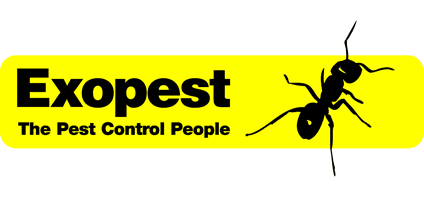
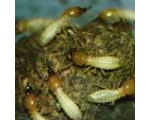
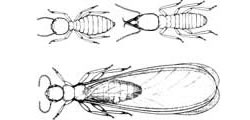
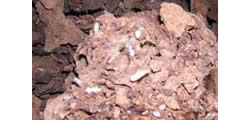
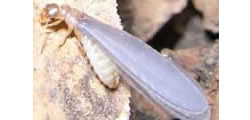
 Flea Control Melbourne by Exopest
Flea Control Melbourne by Exopest Bed Bugs Treatment Program by Exopest
Bed Bugs Treatment Program by Exopest Rodent Pest Control Melbourne by Exopest
Rodent Pest Control Melbourne by Exopest Spider Pest Control by Exopest
Spider Pest Control by Exopest Pest Protection Plan for Businesses by
Pest Protection Plan for Businesses by Cockroach Control Melbourne by Exopest
Cockroach Control Melbourne by Exopest Termite Inspection and Treatment by
Termite Inspection and Treatment by Long Lasting Termite Management Systems
Long Lasting Termite Management Systems Home Protection Plan by Exopest
Home Protection Plan by Exopest Tamper Proof Rodent Bait Stations from
Tamper Proof Rodent Bait Stations from Improve Subfloor Ventilation in
Improve Subfloor Ventilation in Termite and Pest Control for Homes
Termite and Pest Control for Homes Tamper Proof Bait Stations for Rodent
Tamper Proof Bait Stations for Rodent Termite Control in Construction by
Termite Control in Construction by Eco Friendly Subfloor Ventilation for
Eco Friendly Subfloor Ventilation for Effective Bedbugs Infestation Control
Effective Bedbugs Infestation Control Termite and Pest Management Experts |
Termite and Pest Management Experts | Homeguard Termite Membranes From Exopest
Homeguard Termite Membranes From Exopest Termite Pest Control and Management
Termite Pest Control and Management Scheduled Commercial Pest Control by
Scheduled Commercial Pest Control by
